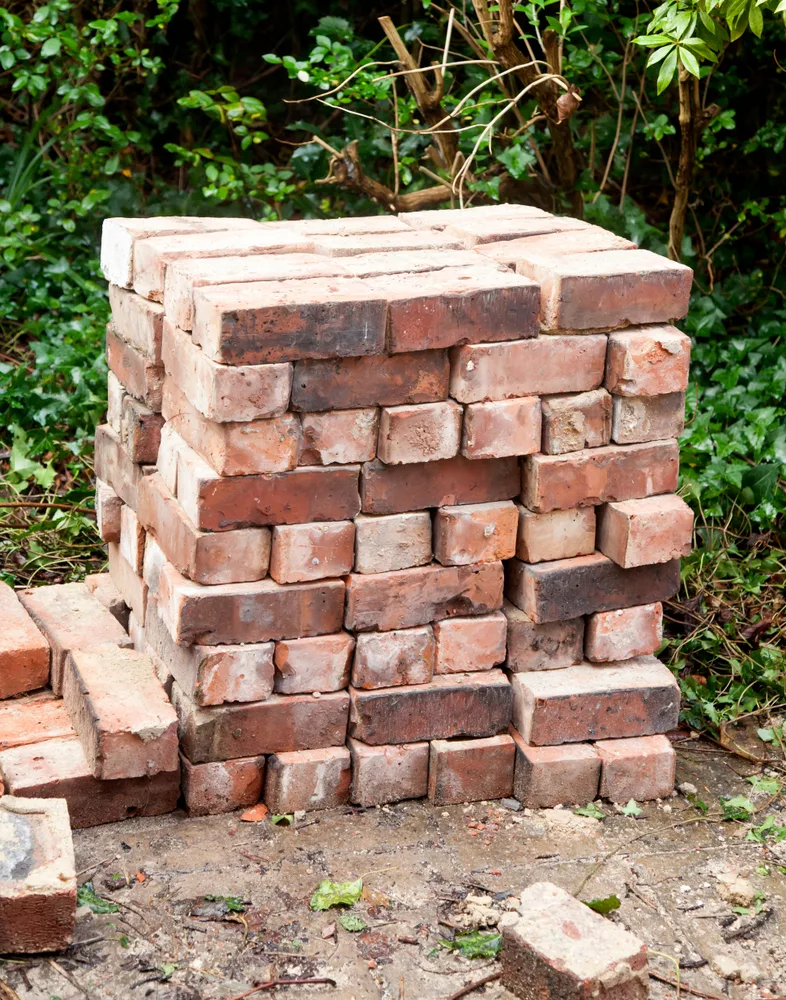
If you use your imagination, you can find plenty of ways to use reclaimed materials in your garden.
In fact, if you are living sustainably, you should be able to create a thriving, beautiful and productive garden using only natural materials and things that might otherwise have been thrown away.
In this article, we will suggest 25 ways to reuse old bricks in your garden, and take another step to go greener and save people and planet.
Why Reuse Old Bricks?
Bricks are a sensible, sturdy and affordable building material. They can be put to a wide range of uses in construction and integrated into your garden design in a wide range of ingenious ways.
They will last for a long time, and can therefore be a good investment for the long term. Unfortunately, however, such construction materials come at a high environmental cost.
Unless you are able to make and sun-bake your own clay bricks at home, any new bricks you use will likely have come from a large industrial manufactory.
Like so many other forms of manufacture, the process of creating new bricks takes a lot of energy and resources.
The clay and other raw materials for the bricks first must be mined. Then they are ground, graded and separated, extruded (often with a lot of water), pressed, shaped and molded, chamfered, coated, dried and fired.
All the machinery involved requires power, and, generally speaking, this power is not renewable. The carbon cost of making this building material, therefore, is fairly high.
Another concern with brick making are the fluorine emissions associated with the process.
Some brickworks have installed scrubbers to lessen the emissions of this substance, which can be dangerous to human health. However, these are expensive and so not all businesses can afford to comply.
There are also a number of other ways in which the brick industry potentially contributes to environmental degradation.
Of course, reusing old bricks is far more sustainable. It will reduce the number of new bricks that must be made.
What is more, it will help to prevent those old bricks from ending up in landfill.
Huge numbers of bricks are sent to landfill each year. But many of those bricks could and should be reused.
The Properties of Old Bricks
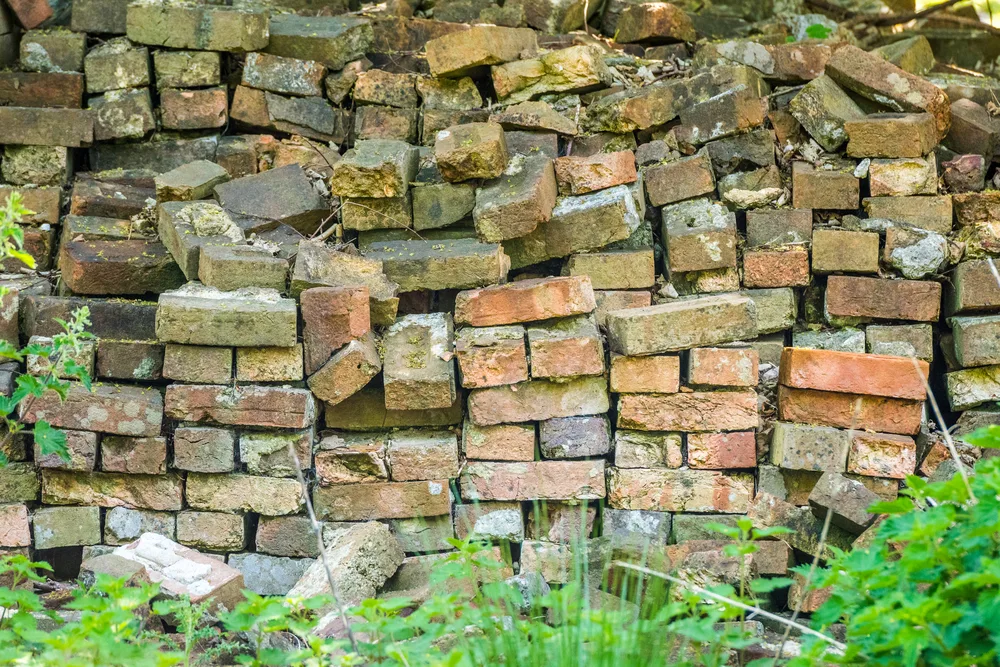
Reclaimed bricks often differ little from those that are brand new. As long as the mortar can be cleanly removed from them, you can use them exactly as you would use any new bricks you can buy.
But why use bricks at all? Why not simply stick to all-natural materials such as wood?
Well, while wood and other organic materials are excellent eco-friendly choices, they will usually have a limited lifetime.
What is more, materials like reclaimed bricks have certain properties that make them an option worth considering.
Bricks are strong, durable, and catch and store heat well. Their thermal properties mean that they can be use to retain heat, or keep temperatures cooler in the summer months.
These characteristics make them a good choice for a range of projects around your garden.
Natural stone also has similar characteristics – but can be more expensive if not readily available on your property.
To inspire you to reuse old bricks on your own property, here are just some intriguing ideas you could consider:
1. Build A Brick Wall
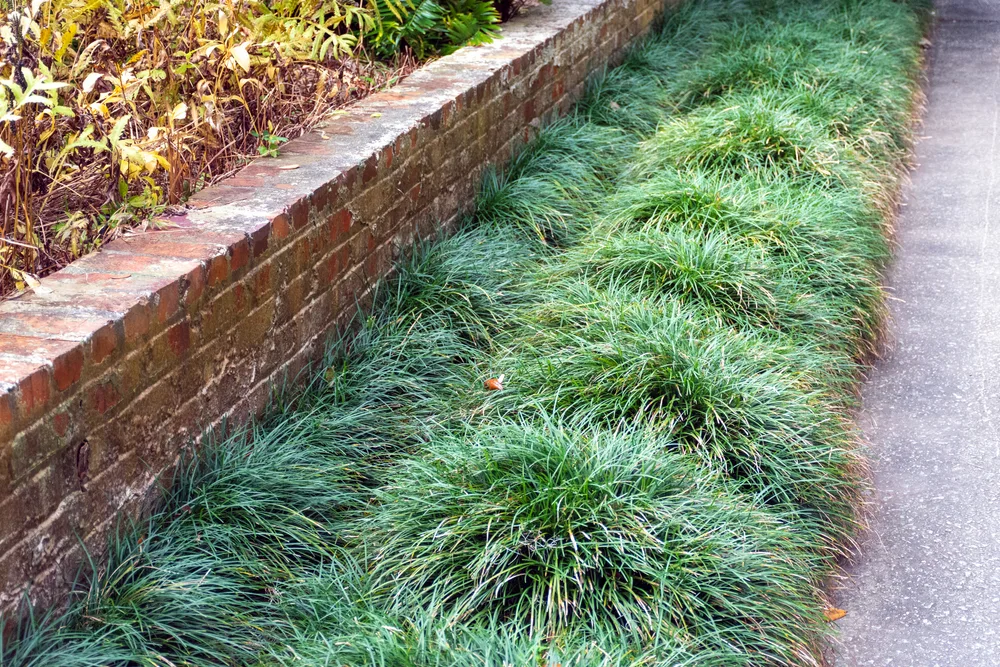
Of course, the most obvious way to reuse old bricks in your garden is simply to use them to build a new brick wall.
A brick wall could be a good choice to create a barrier on an edge of your property. One could also be used to create a division between different garden zones – for example, to provide privacy for a new seating area, or screen off an unsightly view.
New brick walls could be short and ornamental, or much taller and more imposing.
It is worthwhile remembering that if you do not like the look of bare brick, the wall could be rendered or painted with eco-friendly options to create a different look.
How to Build a Brick Wall @ DIYdoctor.org.uk
2. Reuse Old Bricks to Create Raised Beds
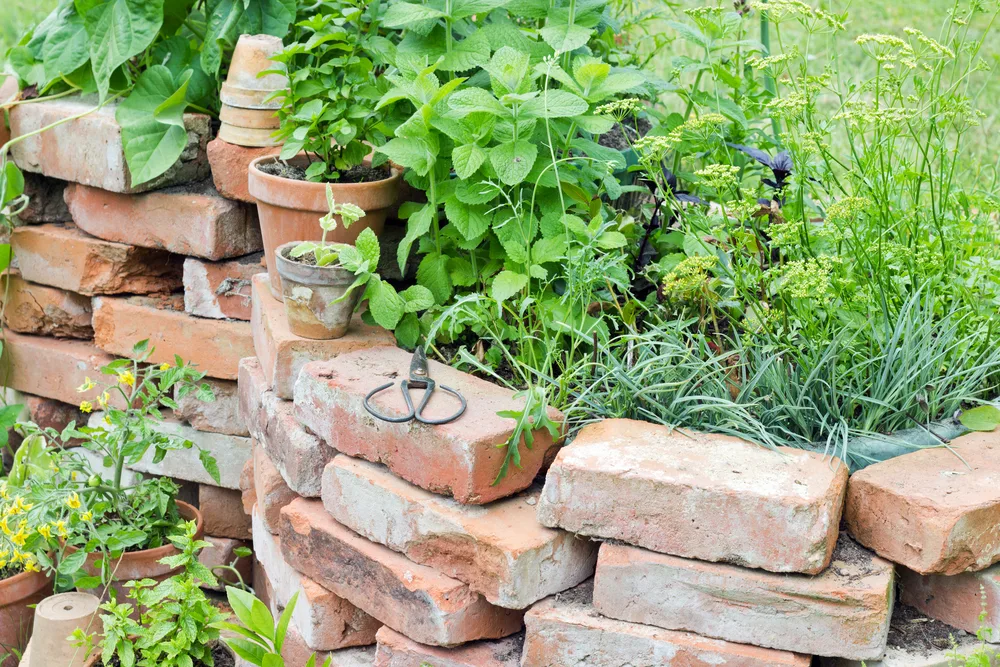
You could also reuse old bricks to form the edges for new raised beds. You could simply place a row of bricks around the perimeter of a new bed, if it is to be only slightly raised above ground level.
But if you want the bed to be higher, you can easily create a mortared wall of bricks to contain the growing medium.
How to Build a Brick Planter @ DIY.com
3. Build a Herb Spiral
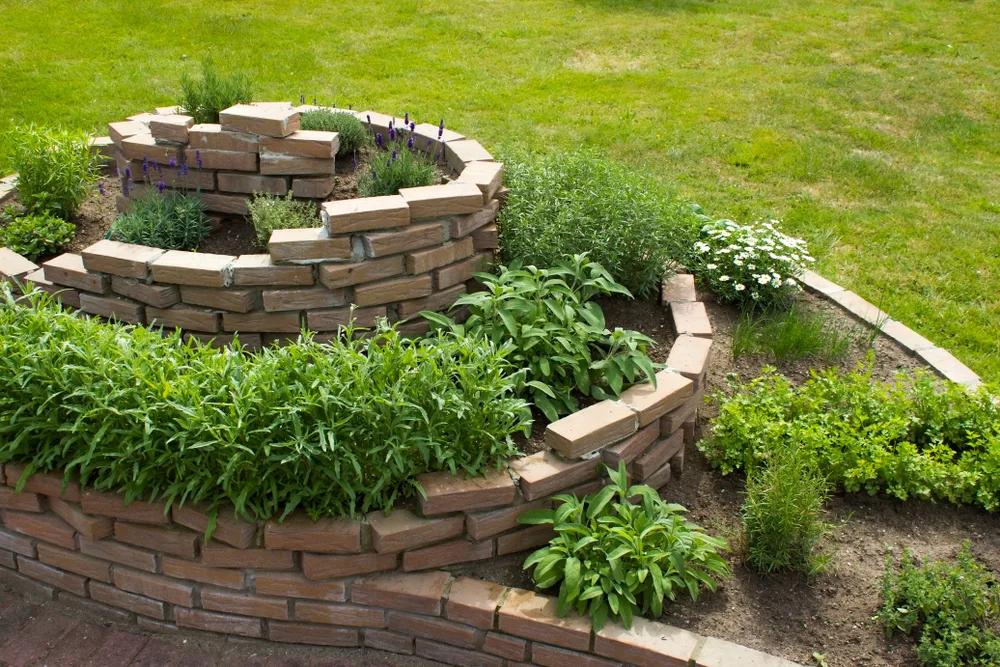
A different sort of raised growing area is a herb spiral. You can also use bricks to form the structure of one of these spiral-form beds.
There are two different ways to make a herb spiral – a permanent and non-permanent method. The non-permanent method involves using organic materials to build up a mound, using the hugelkultur approach.
The permanent method involves building up a solid spiral form. Reclaimed bricks are one of many materials that you could use for this purpose.
Simply build a spiral wall that starts low on the outside and rises towards the middle then fill it with biomass material, grass, leaves, compost and soil to create your spiral slope for growing.
How to Build a Herb Spiral @ HappyDIYhome.com
4. Create a Brick Lined Hot Bed
A hot bed is another particular type of raised bed. It is an area filled with manure/ straw or other organic material and topped with compost.
The materials give off heat as they break down, gently warming the growing medium. By creating a hot bed, you can get started with sowing and growing earlier in the year.
Reclaimed bricks could be a good choice for edging a hot bed because of their thermal properties.
5. Edge Garden Beds or Borders
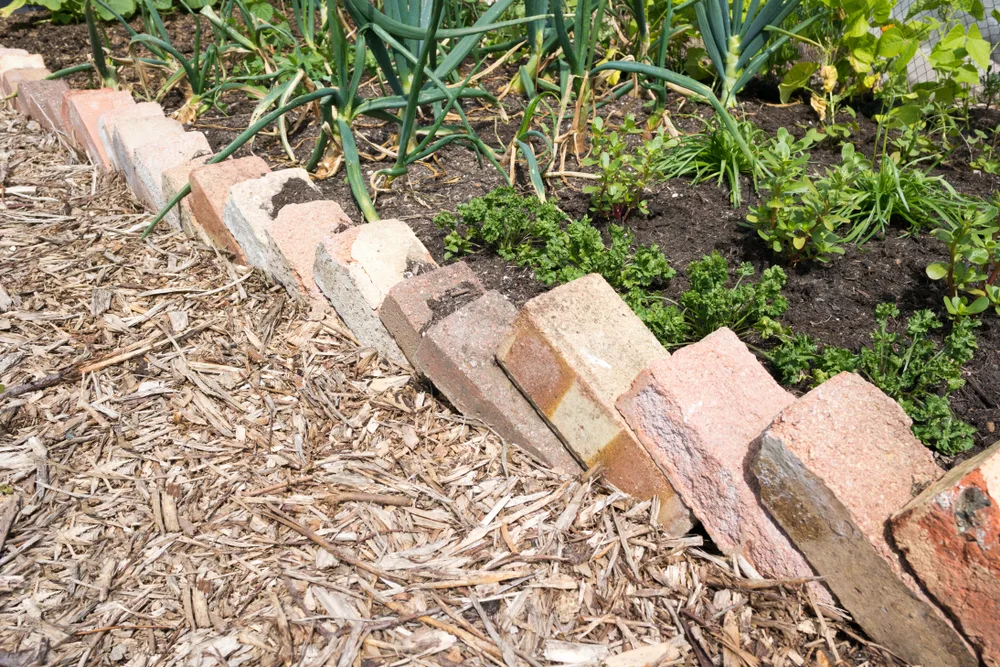
Brick is also a good choice for ground level garden bed edging, to line borders or other growing areas.
Bricks can simply be laid in a line around the edge of the space, either on the surface of the soil, or inlaid into it.
They can also be built up into short walls to surround the space, or placed at an angle sticking up out of the soil for an interesting effect.
6. Reuse Old Bricks to Make a Garden Path
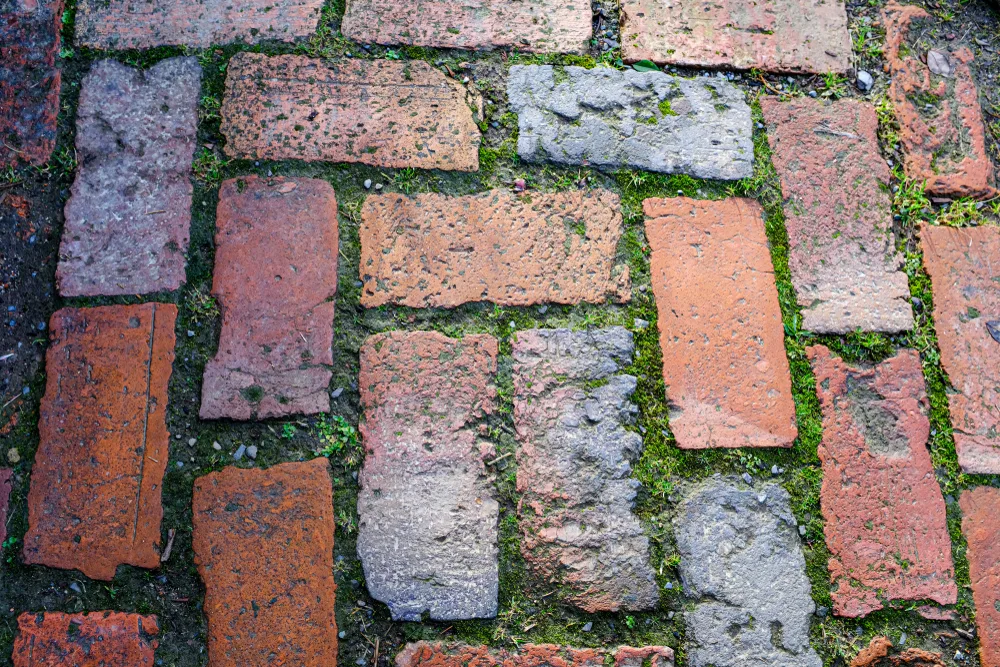
Bricks are also an excellent material to use to make a garden path. There are a number of different ways that the bricks could be arranged to create a decorative yet functional design. You could, for example:
- Place the bricks close together, in straight lines, squares, or herringbone pattern.
- Intersperse reclaimed bricks with other materials, such as natural rocks or reclaimed flagstones or flagstone fragments to create a design.
- Insert lines of bricks along the edges of a gravel or bark path to retain the material.
- Create a stepping stone type design with areas of bricks along a pathway of another material, or between low-level planting.
Build a Brick Pathway @ familyhandyman.com
7. Create a Patio Area for Outdoor Dining
Extending the path idea, you could also lay out a larger area of bricks on the ground or inlaid into it to form a patio area.
Again, you could create a decorative feature by laying out the bricks (and any other materials you choose to use) in a range of different patterns.
The easiest way to make a brick patio is using the sandset method, details of which can be found below.
How To Make an Easy Brick Patio Pattern For Beginners @ thespruce.com.
8. Use Brick Pillars For a Sturdy Fence
Even if you do not want a whole brick wall (or do not have enough bricks for this), you could still consider making some brick pillars for a sturdy fence.
Such pillars could be built in a wide range of heights and styles.
These pillars will be far stronger than typical wooden posts and so could be used to support a much thicker and sturdier fence.
This could be beneficial for security. It could also make it easier for you to implement vertical garden ideas, or espalier fruit trees against it.
How to Build Brick Columns @ wikihow.com
9. Construct a Brick Shed
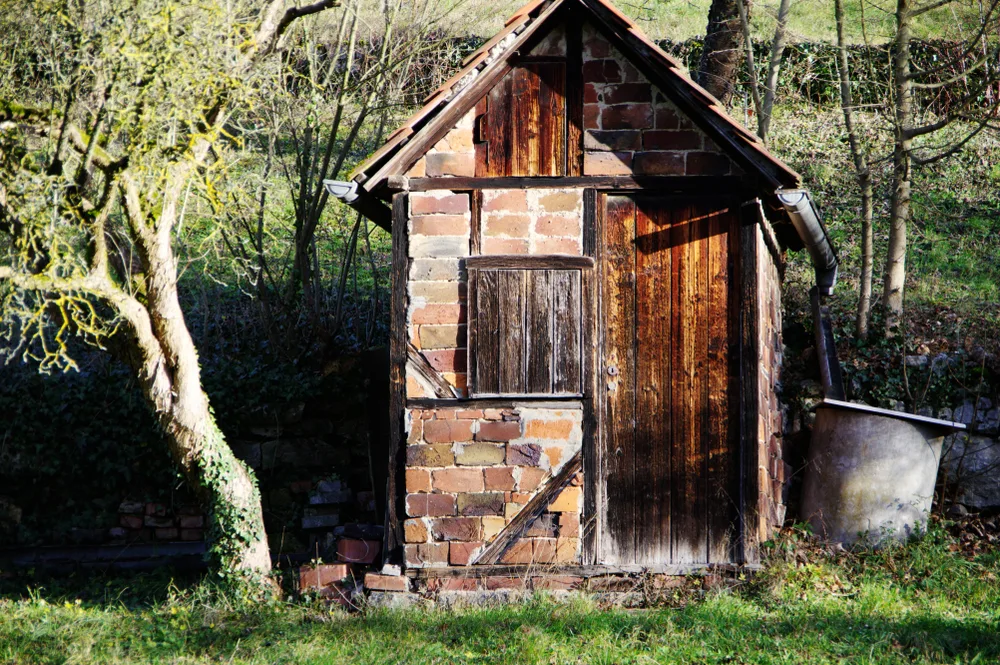
If you have access to a large number of reclaimed bricks, you could reuse old bricks to make the walls of an entire building in your garden.
One of the most obvious things might be to make a shed for garden storage. But you could potentially make a range of other garden buildings too – from bases for greenhouses, to summer houses or garden rooms, workshops, studios, or even a pool house or guest lodge.
How To Build a Brick Shed @ doityourself.com
10. Build a Brick Bunker, Cold Store or Root Cellar
Bricks can also be used in the construction of partially subterranean structures.
The properties of bricks mean that in olden days, they were often used to create cold stores, ice houses or root cellars.
Making an earth-sheltered bunker, cold store or root cellar using some reclaimed bricks and other materials could be a great way to move towards a more sustainable way of life on your homestead.
Brick Arched Root Cellar @ pinterest.co.uk
11. Create a Brick Playhouse for Kids
Another idea, if you have kids, could be to make them a playhouse or fort using some reclaimed bricks to create its walls.
There are almost no limits to the designs that you could potentially build once you have developed some brick laying skills.
Your kids might even be able to get involved with the project, and help you create your castle made from materials that would otherwise have been thrown away.
While your den might not be quite as elaborate, this example may inspire you.
Brick Playhouse @ homecrux.com
12. Make a Brick Lined Pond
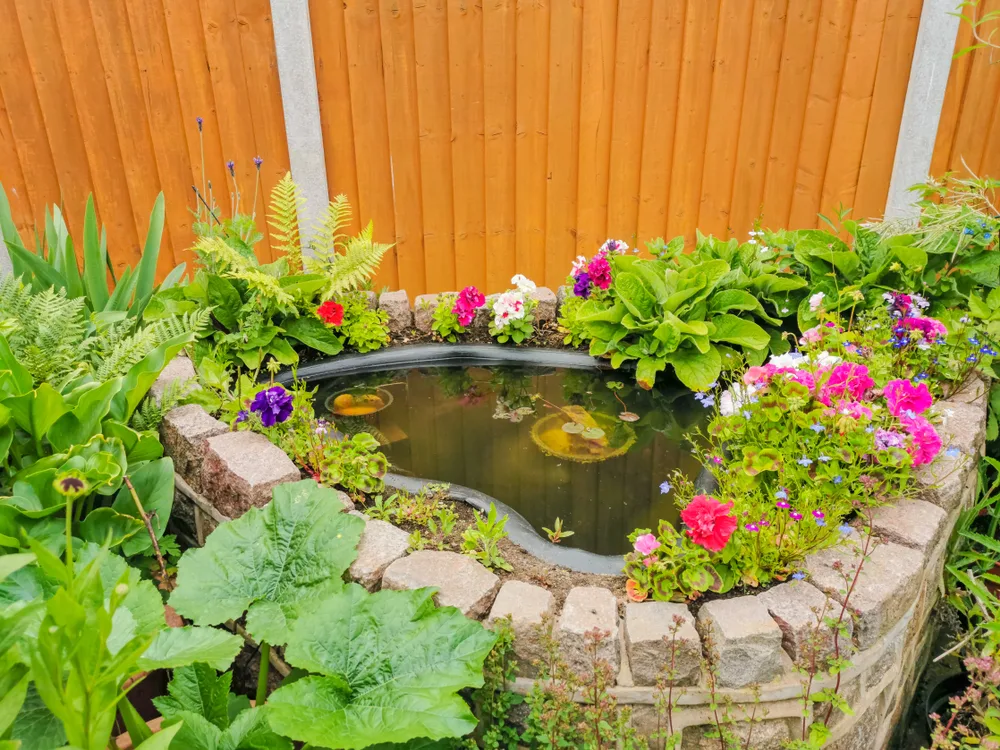
A wildlife pond can be a wonderful addition to any garden. Bricks can be used to build up the edges of a pond before you line it, or simply placed around the edge of an existing pond as a decorative feature.
If you do have walls around your pond, just make sure there is an escape route for any wildlife that falls in.
Pond Construction Examples @ womenwithwaders.co.uk
13. Reuse Old Bricks To Make a Water Feature
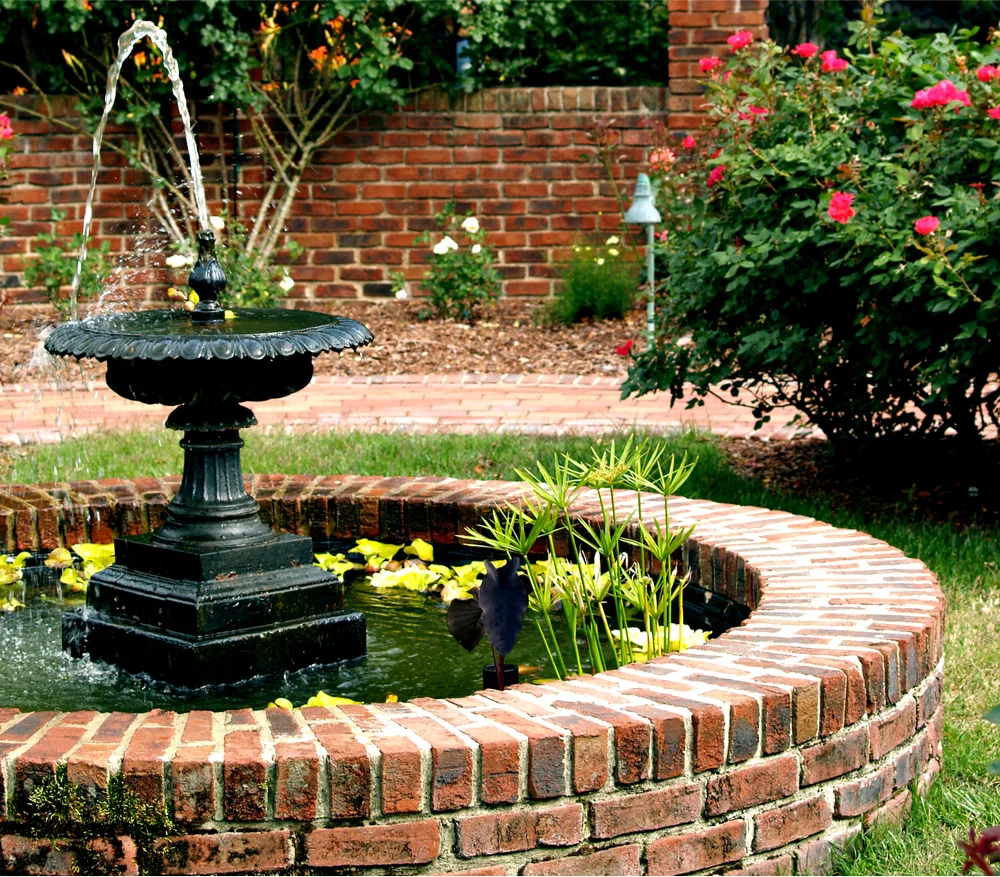
In addition to placing bricks around the edges of a pond, you could also consider placing bricks in an interesting way to create a new water feature or fountain.
The sound of running water can be delightful in a garden, and you can power your water feature using renewable energy for a more eco-friendly option.
Old Village Pump Brick Water Feature @ flowercraft.co.uk
14. Construct The Base For Built-In Garden Seating
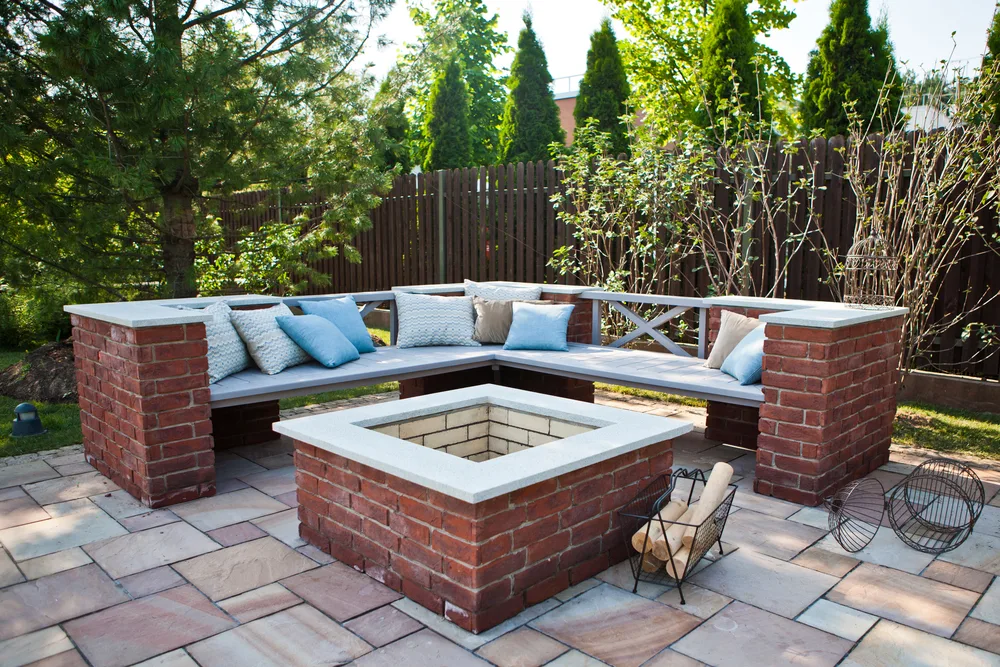
Bricks are strong enough to form a permanent and sturdy base for built-in seating or benches in your garden. There are a number of great design ideas out there to consider, and you can certainly reuse old bricks for the purpose.
How to Build a brick bench @ gardenguides.com
15. Create the Base for an Outdoors Kitchen Counter or Bar
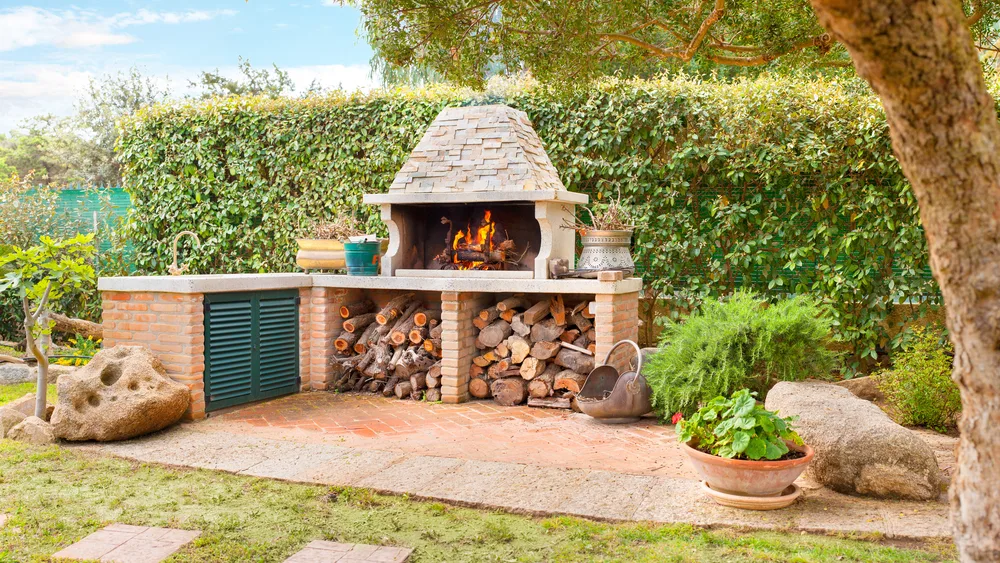
Old bricks can also form the base for outdoors kitchen counters or an outdoors bar. More and more, we are turning our gardens into extensions of our homes.
An outdoors kitchen can be a great addition. It will make it easier than ever to enjoy barbecues and other outdoors cooking.
Simply use the old bricks to build up the base and then top it with a countertop of your choosing.
16. Reuse Old Bricks to Build an Outdoors Fireplace
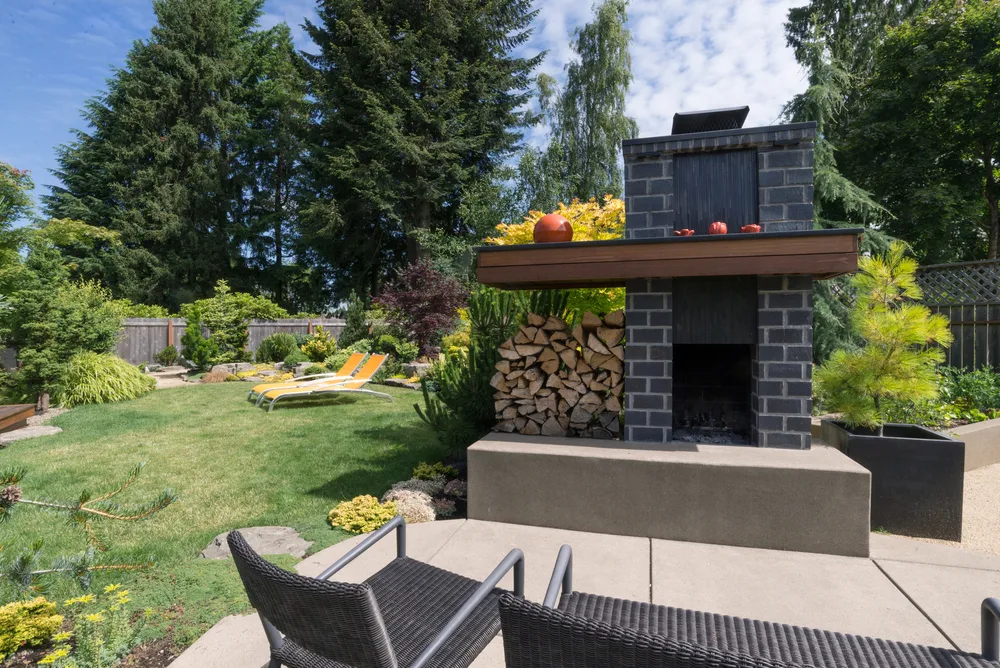
If you enjoy spending time outdoors, but it gets a little chilly in the evenings where you live, you could consider building yourself a magnificent outdoors fireplace.
Brick is one of the materials that you could potentially use for this purpose.
Just make sure that you are aware of all safety issues, and have checked the regulations where you live.
DIY Brick Fireplace @ youtube.com
17. Reuse Old Bricks to Make a Fire Pit
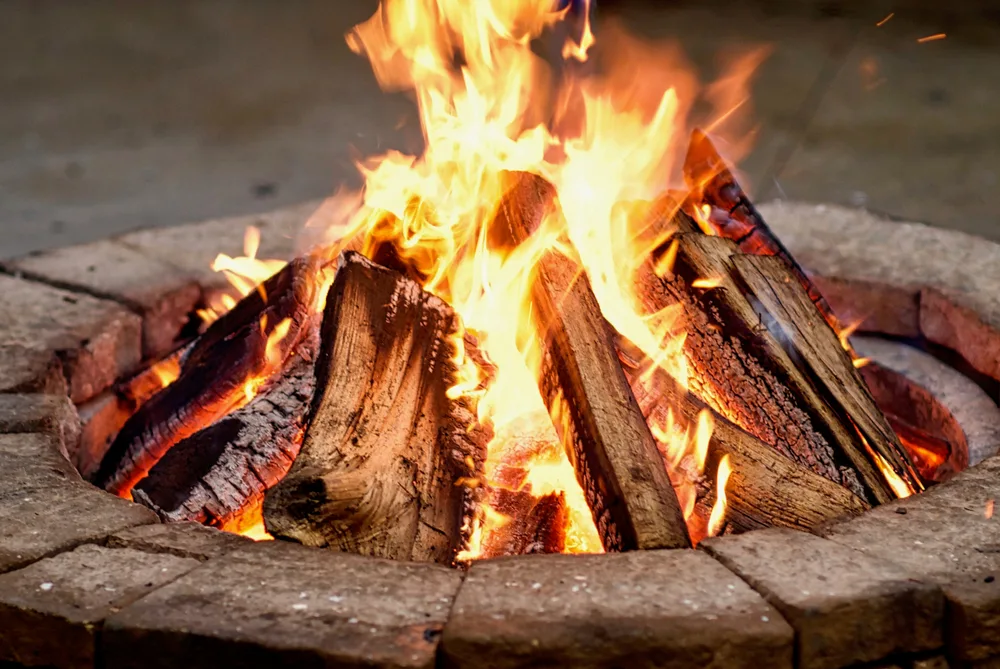
You could also create a more simple fire pit for your garden seating areas or outdoors kitchen using old bricks to make a safe fire ring.
You could keep things very simply by just digging a pit in the ground and placing bricks around it.
But you could also make something a bit more elaborate, with brick walls, and perhaps even install a grill across the top for outdoors cooking.
DIY Brick Firepit @ familyhandyman.com
18. Create an Outdoors Brick Pizza Oven
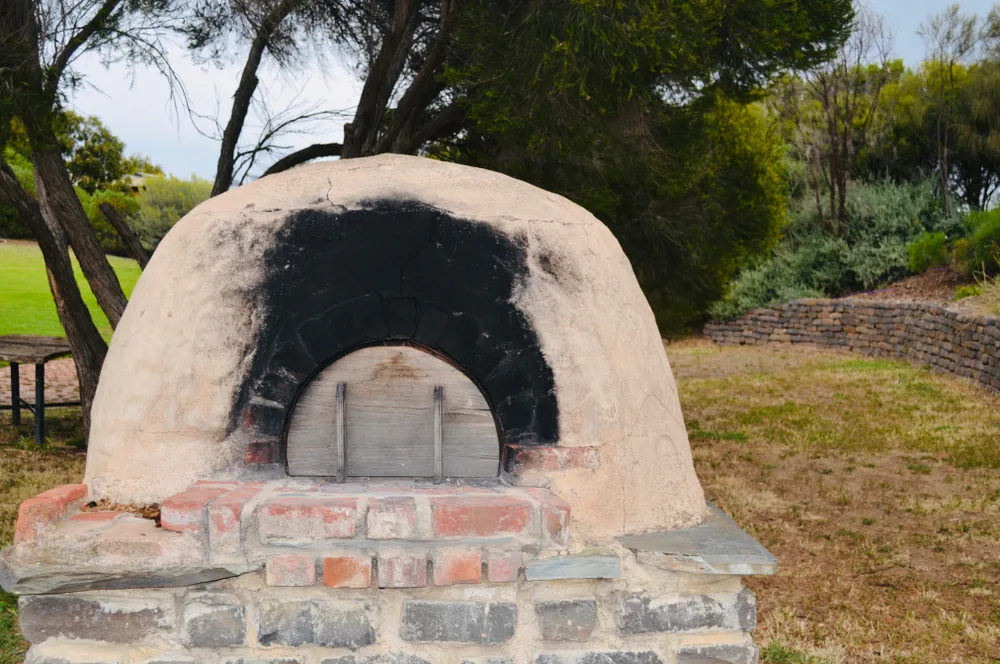
In a variation on the theme, you could also create an outdoors pizza oven.
A pizza oven could expand the range of meals you can cook outdoors and provide fun for the whole family.
You could construct a pizza oven entirely from reclaimed bricks, or build a base from bricks and then make a clay or cob pizza oven on the top of that base.
DIY Pizza Oven @ youtube.com
19. Support for Staging in a Greenhouse or Polytunnel
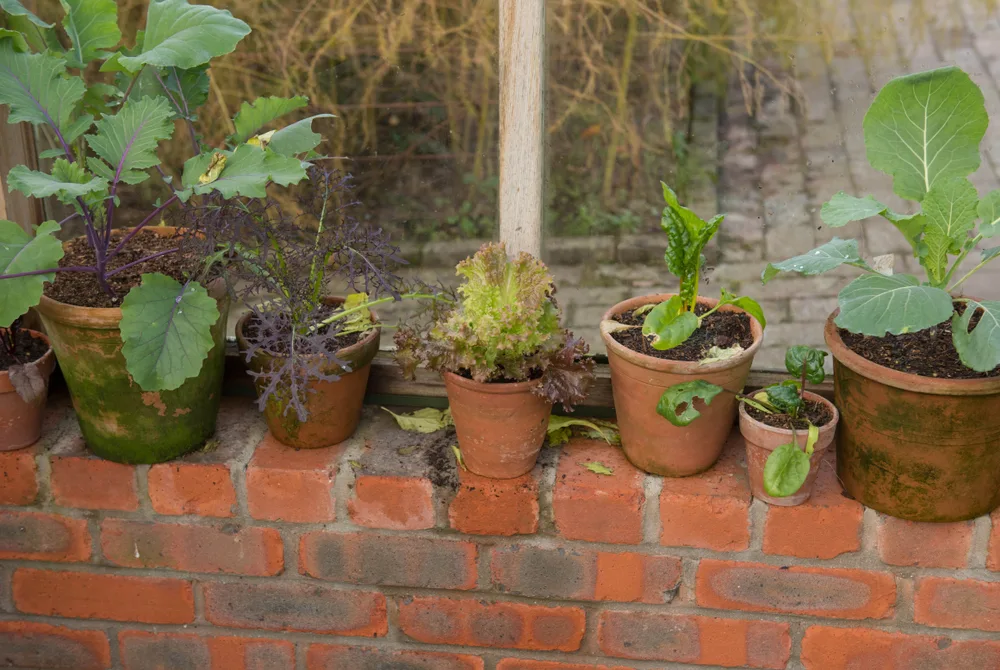
There are plenty of different ways to make the most of the space available in a greenhouse or polytunnel, and staging is often a good option.
Rather than buying new staging, however, you can make your own from a range of reclaimed materials – bricks included.
The added benefit of using bricks to form supports for staging is that they have good thermal mass. This means that they will store heat from the sun and release it gently when temperatures fall.
This helps to keep the temperatures in your undercover growing area more stable.
Staging Ideas for a Polytunnel @ firsttunnels.co.uk
20. Make Simple Shelving For a Vertical Garden
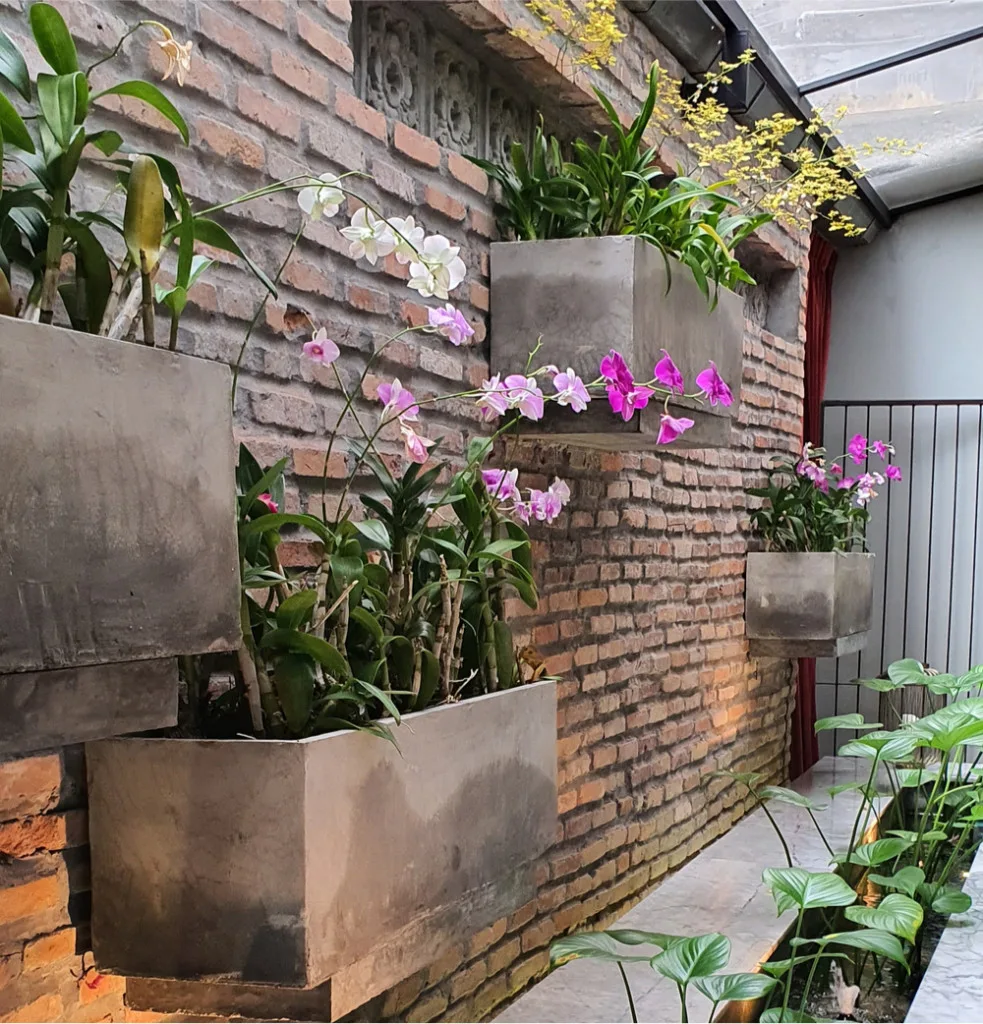
Vertical gardening provides some elegant solutions that help you make the most of a small garden and grow more food and flowers.
One of the easiest ways to make a vertical garden is to create some shelving, placed up against a sunny wall or fence. This shelving can be used to fit in more plant pots and containers.
One of the easiest ways to make some shelves is simply to stack bricks and then place planks of reclaimed wood between them.
21. Build a Brick Bird Bath or Feeding Station
To attract birds to your garden, why not create a brick column in a suitable spot. The brick column could make a great base for a bird bath, or simply be used as a bird feeding station.
This could be a great way to bring in some feathered friends, and might also make an attractive ornamental feature for your garden.
Brick Bird bath @ Robinsnestingplace.blogspot.com
22. Reuse Old Bricks With Holes as Candle Holders
Not all of the ideas out there to help you reuse old bricks involve having a huge number of them.
Even a single old brick can be put to good purpose.
If you have an old brick (one of the type with holes through the middle), you can simply repurpose it as a candle holder.
This could be an attractive way to light your outdoors table, or a seating area in your garden.
Brick candle holder @ pinterest.com
23. Reuse Old Bricks With Holes as Mini Succulent Planters
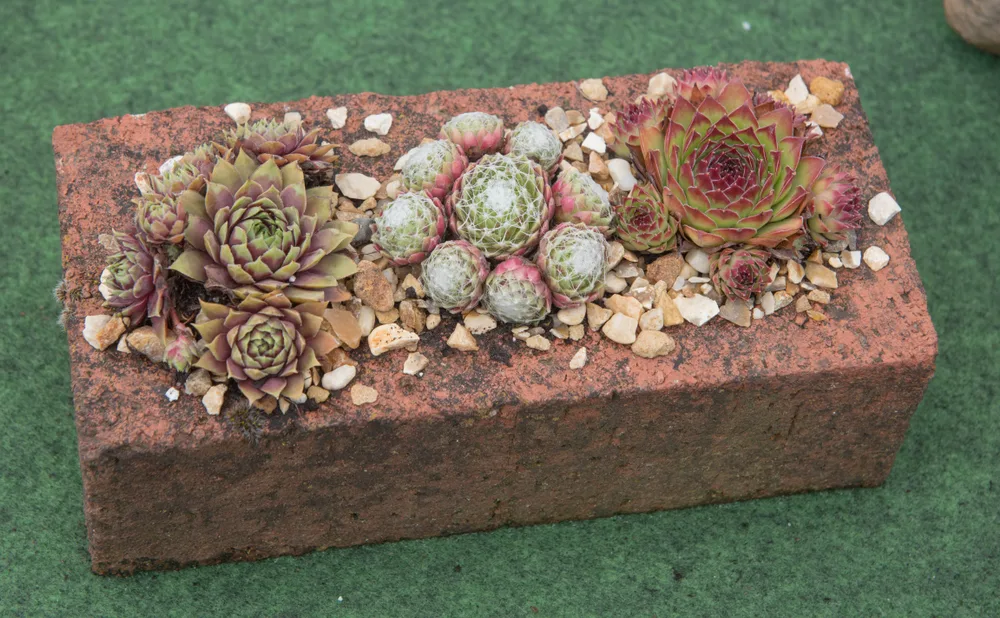
Those individual bricks with holes in them could also be used as mini succulent planters.
Simply pop your bricks in a suitable spot, fill the holes with a suitable growing medium, and place your planters wherever you would like them to go.
You could even consider stacking these on their sides up against a wall to create a vertical succulent garden.
Vertical Succulent Brick Wall @ lizmarieblog.com
24. Reuse Old Bricks to Make Garden Markers
One more way to make use of a handful of reclaimed bricks is to use them as garden markers.
Simply use some eco-friendly paints to write plant names on each brick, then place them in your garden.
Big markers like these will not blow away or be knocked over like other garden markers. Their size and clarity could make them easier for kids to read.
You could also paint pictures on your bricks – such as carrots, tomatoes and peas, for example. This will help kids keep track of what you, and they, are growing.
Brick Garden Markers @ pinterest.com
25. Create a Unique Piece of Garden Art
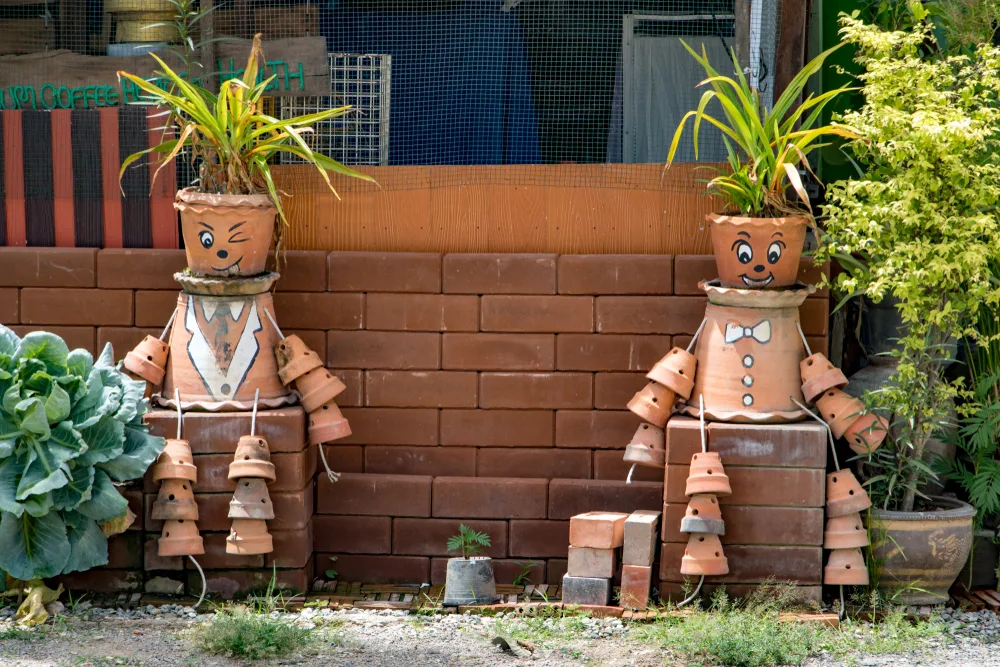
Finally, bricks can also be used in a range of whimsical, fun ways to make artworks for your garden.
Whether used as they are, or painted, you and your family could have a lot of fun coming up with how to use them.
You could make an artwork on the ground, or stack bricks to make your own impressive sculpture. Have some fun coming up with your own unique piece of garden art.
Here is one beautiful piece of mosaic art using bricks, for example:
Herb Garden Mosaic @ houzz.com
Use your imagination and you will find that there is really no limit to the ways in which you can reuse old bricks in your garden.

Get the famous Rural Sprout newsletter delivered to your inbox.
Including Sunday musings from our editor, Tracey, as well as “What’s Up Wednesday” our roundup of what’s in season and new article updates and alerts.

